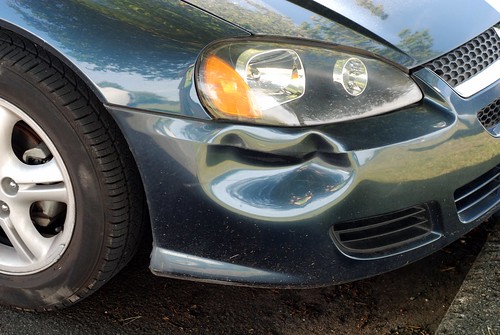Not every personal injury case on Indiana roads involves one car smashing into another. Motor vehicle accidents can involve more than just automobiles. Motorists are required to drive in a safe and observant manner and to abide by all Indiana  traffic laws, including exercising reasonable care when sharing the roadway with pedestrians. Pedestrians in a crosswalk have the right of way. While this is the law, many drivers do not follow this rule of the road which is aimed at preventing injuries. Serious pedestrian accident injuries could include brain or spinal cord injuries, broken bones, or even death. Pedestrians aren’t of course always blameless: We have all seen a pedestrian crossing a multi-lane road that reminds us of the video game called "Frogger." That’s why motorists have to be extremely vigilant at all times.
traffic laws, including exercising reasonable care when sharing the roadway with pedestrians. Pedestrians in a crosswalk have the right of way. While this is the law, many drivers do not follow this rule of the road which is aimed at preventing injuries. Serious pedestrian accident injuries could include brain or spinal cord injuries, broken bones, or even death. Pedestrians aren’t of course always blameless: We have all seen a pedestrian crossing a multi-lane road that reminds us of the video game called "Frogger." That’s why motorists have to be extremely vigilant at all times.
If a vehicle has stopped at a crosswalk to let a pedestrian cross, all other vehicles are required by law to also stop at the crosswalk. No matter how much of a hurry a driver is in, it takes a lot less time to stop and let the pedestrian cross safely than it does to wait for a police officer to come to the scene of a collision and take an accident report.
The Indiana Bureau of Motor Vehicles Driver’s Manual reminds Hoosiers that crosswalks or a pedestrian signal indicate that pedestrians may be nearby. In addition to yielding the right of way to persons on the street, the BMV recommends the following: don’t make a turn that causes a pedestrian to stop, slow down or make some other special effort to avoid a collision; be especially careful if children are in the vicinity, because children are not fully aware of the dangers of traffic; and be respectful of others who have difficulty in crossing streets, such as elderly persons or persons with a visual disability.

 Many of those incidents can result in what appears to be minor fender-benders. However, so-called “low impact cases” (those that generally involve speeds of less than 10 mph) can at times be deceiving. The amount of injury to a human body in a car accident is not always directly proportional to the damage to the cars involved in the traffic accident. This is a matter of energy management. We all know of incidents where vehicles have been completely torn to shreds but the driver walked away without a scratch, and other cases where despite minimal amount of visible property damage to the car, the occupants were seriously injured.
Many of those incidents can result in what appears to be minor fender-benders. However, so-called “low impact cases” (those that generally involve speeds of less than 10 mph) can at times be deceiving. The amount of injury to a human body in a car accident is not always directly proportional to the damage to the cars involved in the traffic accident. This is a matter of energy management. We all know of incidents where vehicles have been completely torn to shreds but the driver walked away without a scratch, and other cases where despite minimal amount of visible property damage to the car, the occupants were seriously injured.